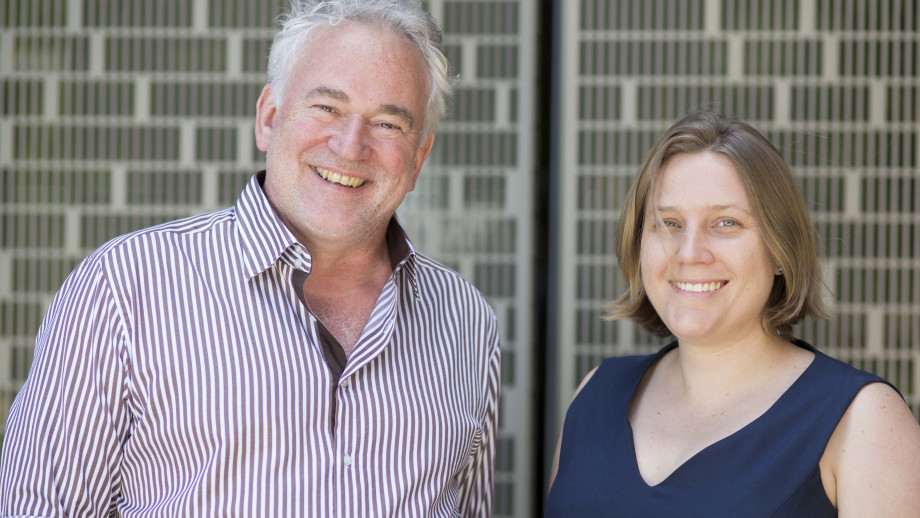Boosting women in mathematics at ANU

The Mathematical Science Institute at ANU has always had significantly fewer women on staff than men. In late 2016, the school had a total of 25 continuing academic staff. Of these, just four were women.
Determined to address this gender imbalance, Professor Peter Bouwknegt, Director of the ANU Mathematical Science Institute (MSI) contemplated that MSI could advertise an academic position that only women were eligible to apply for, under the ANU Identified Positions procedure.
"We take this gender imbalance seriously and were willing to do something extreme to address it," he said.
At a School meeting late in 2016, following a discussion with colleagues, it was decided that the next MSI recruitment round would include one Identified Position that only women would be eligible for. Simultaneously, two other continuing roles would also be advertised; these would be open to men and women.
Token hire or top quality candidate?
The initial response from MSI staff was mixed: some people were on board from the beginning, while others had reservations about how the female-only round would work.
"Everyone agreed about the goal of appointing more women, but not everyone agreed about the process," he said.
For some, there was a concern that the School may end up 'settling' for someone who was not up-to-scratch. Peter explained that, as with a regular recruitment round, the quality of the candidate would be the top priority.
"We're not going to appoint people just because they're female, we're going to appoint based on merit," he said.
Some MSI staff, including Senior Lecturer Dr Joan Licata, initially had concerns about the possibility that the new hire would be viewed as the 'token hire' who only landed the job due to their gender, not their talent.
"My biggest reservation was how the new hires would be received [within the school]. This was a big concern for me," she said.
For Joan, it was important that her colleagues at MSI believed the position could be filled without compromising quality.
"I liked that the process allowed everyone to give their feedback and discuss any reservations. Ultimately, wanting to make strong hires really pushed the department to recruit, which gave us a great applicant pool." she said.
A successful outcome
Dr Kate Turner was successful in her application for the Identified Position. She says she hasn't encountered any negative attitudes from her new colleagues since she started at ANU in 2017.
"I was not particularly concerned about being the 'token female'. I'm confident in my abilities, so even if I was seen as this, I know that I'm likely to succeed in other measures," she said.
In addition to hiring Dr Turner, an excellent and very accomplished researcher, MSI also appointed two further women (one continuing and one tenure-track), hiring a total of three new female staff members.
"We had an extremely good field of candidates. I wish we could have appointed more people," said Peter.
Dr Joan Licata said it's been good having more women join MSI, especially given the high service burden that women can face, frequently being called to sit on selection panels and committees.
She also says having more women in maths sends a positive message to female students.
"It's really important for students to see that mathematics is a viable career path for women."
Key Learnings
MSI Director Professor Peter Bouwknegt believes that the success of this hiring round was due to several factors. He offers the following advice to other ANU Colleges and Research Schools looking to hold a women-only recruitment round.
- Be flexible.
To encourage the highest number of applicants, the female-only position may be left very broad and open, rather than focused on a specialist field of research. At MSI, the female-only role was simply advertised as a position in mathematical science.
- Buy-in is critical.
Peter says it was important to involve everyone at MSI, so they were informed about the process and were invested in the outcome.
"I encouraged everyone to go out and ask their contacts to apply because everyone here knows great female mathematicians," he said.
- Where necessary, utilise the ANU Dual Hire procedure.
For dual-career academic couples, the 'two-body problem' means it can be difficult for both people to find a suitable job in academia at the same university, or within the same city.
The Dual Hire procedure gives guidance on how to negotiate dual-career appointments.
Peter believes that in this round of recruitment, being able to offer a suitable academic position in another College was critical in securing a top-quality candidate.
Related policies and information:
Procedure: Dual career hire application and appointments
Procedure: Identified position procedure
This article was originally posted in the ANU Newsroom website.
